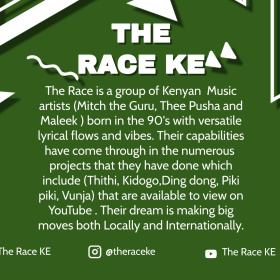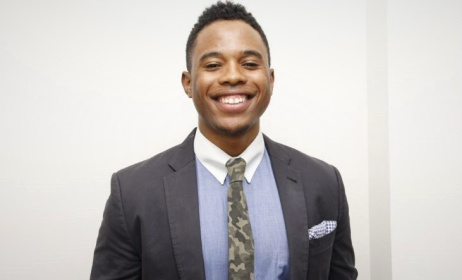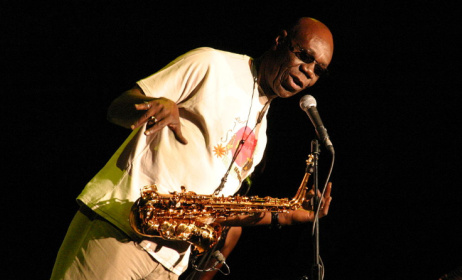Traditional music in Cameroon
By Guy Martial Feukwu Noule
In general, culture is considered a fairly coherent set of knowledge resulting from a community’s struggle to resolve various issues, meet their needs and reach ambitions related to comprehension, myths, religious or artistic representations, signs and symbols that are used for communication purposes. Because of a large cultural diversity, Cameroon is often considered a miniature version of Africa. The country holds 250 ethnicities and languages, which involves a lot of dancing rhythms and subsequently various types of traditional music.
 Traditional dancers. photo by kwekudee-tripdownmemorylane.blogspot.com
Traditional dancers. photo by kwekudee-tripdownmemorylane.blogspot.com
Considering these facts, this text isn’t going to perform a study of all kinds of traditional music but rather give a general overview. A positive approach to traditional music involves defining the concept of traditional music itself. Then we’ll assess the current state of traditional music in the Cameroonian context. Finally, we’ll determine different purposes and strategies that could be established in order to boost this specific artistic sector.
Traditional music from a conceptual perspective
Traditional music often has a poor reputation and many think it is the emblem of an outdated era. Being seen as unalterable and passed orally from one generation to another makes traditional music less attractive through the years, although it is definitely determined by a strong oral and folkloric aspect.
Traditional music is usually played to accompany traditional dances during ceremonies and rituals. For example, the Djimassa dance is typical of the Bamoun people and is performed by queens of the royal courts at enthronement ceremonies or during princely weddings. As for Samale, it is a type of satirical poetry that talks about moral issues in a style that only insiders can understand. It is a popular form of entertainment that is performed at funerals and other public events. There’s also the Mbaya dance. It is widely spread across Cameroon, has different names depending on regions and is considered “obscene” because it deals with taboo topics such as sexuality. Nowadays, this particular dance has gone beyond ritual concepts and is performed at popular festivities.
In her 1997 article ‘Ten years of traditional music in France’, Françoise Etay points out that “traditional music is defined by a deep establishment in a specific place. It isn’t a copy of the past, but a current and very much alive expression of cultural features that have persisted through many generations in a particular place”. Therefore it is appropriate to say that nowadays, with the evolution of norms in society and major shifts among populations, traditional music has quickly adjusted to modern standards and should not be relegated to the past.
The current state of traditional music in Cameroon
Today’s audiovisual landscape doesn’t showcase much traditional music in its original form – at least this is the feeling one gets when listening to modern music. However, this is not the case because most rhythms we hear in contemporary music are indeed inspired by traditional tempos and mixed with new elements and influences. A good example is Makossa, which originates in the coastline of Cameroon and is typical of the Sawa people. But the Sawa themselves don’t seem to identify with this music anymore, because the very same Makossa isn’t played according to traditional conventions. It is no longer the ‘authentic’ type of music the Sawa have always known; instead it has become a mix of foreign rhythms (such as Rumba, Coupé-Décalé, Afro-pop, R&B, etc.). Purists of this genre deplore the fact that it has been ‘taken over’ by imported beats. Besides Makossa there is Bikutsi, which is another form of popular rhythm.
This analysis is even more obvious on the international stage, where Cameroonian music is poorly represented. It has been a while since an artist from Cameroon has won a prestigious African award, such as the Kora Awards. The last winner of such a prize was Wes Madiko back in 2000. This is quite a pessimistic description of the situation. It is worth mentioning that a few artists or groups are fighting to preserve the local cultural heritage, such as Faddah Kawtal in the north of the country, the Takam II in the west and the Patengue orchestra. Josué Kouoh (aka Eriko) is one of the many young artists who are still eager to not tone down their artistic creations by sampling foreign musical genres.
Another unfortunate observation is the lack of genuine festivals dedicated to traditional music. It is usually performed in festivals organized by a particular community such as the Bamoun or the Sawa people festivals, the Toupouri Feast of the Cock and the Gunu Festival, for example.
Traditional music instruments
Traditional music is definitely determined by the instruments that are used to produce it and is inspired by the songs and rhythms created to accompany dancers in their body expression. Among these instruments are tom-toms, drums, jingle calabashes, tambourines, balafones, castanets and tuning forks. These various instruments are played to give rhythm to traditional dances such as Djimassa, Lekalé, Makoné, Engang, Kkoue, N’teuh, Mbaya, Kalangou, Djang and Ambassibé, etc. However, nowadays, constantly growing digital technologies that produce artificial sounds are invading the market.
Strategies of traditional music development in Cameroon
As mentioned above, traditional music in Cameroon still plays a major role on the national cultural scene. Despite progress in modern technologies, some artists are trying to practice their art with a certain authenticity. However, in other parts of the country, traditional rhythms are being replaced by a new fusion of local sounds and imported beats.
The stakes are still high, especially in an environment where protecting cultural expression and diversity is widely advocated. It is important for Cameroon’s traditional values to be preserved, in order to inspire present and future generations to be more creative and competitive on the international stage. Can we actually be competitive on the African musical market if we concentrate our creations on mere copies of rhythms such as Rumba, Coupé-Décalé, Salsa or Zouglou and in doing so forsake our Cameroonian Makossa, Bikutsi, Benkin and Assiko, for example? Probably not.
As a result, it appears crucial to take some resolute actions to allow younger generations to claim ownership of traditional music, which is declining and making room for some ‘unproductive interbreeding’. Tangible measures need to be considered if we wish to preserve authentic Cameroonian music, which is inspired by our musical wealth. It is a cry for help that should bring together all those involved in this good cause, such as public authorities, cultural communities, artist trade associations, and others.
Bibliography ETAY, Françoise. 1997. ‘Ten years of teaching music in France ‘ in 1967–1997: thirty years of teaching music and dance in France, Marsyas, special edition, cité de la musique, Paris. MORTIER, Claire- 2005 – 2006 ‘Traditional music and institution : Any room for traditional music in institutions?’. CEFEDEM Bretagne – Pays de Loire.





























Comments
Log in or register to post comments